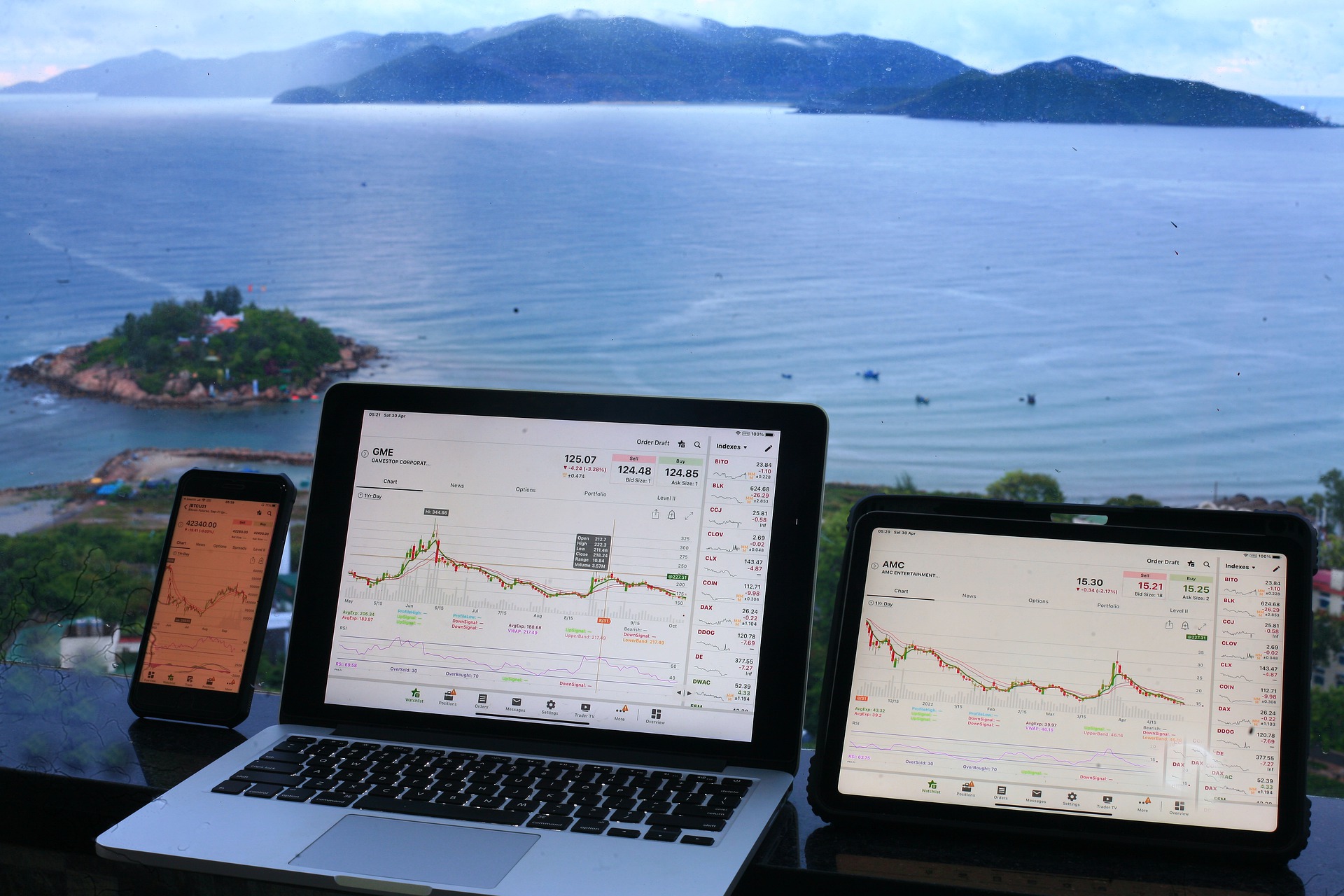In the dynamic world of Forex, currency valuations are constantly in flux, influenced by a multitude of factors. One such factor that can have a significant impact on the market is currency devaluation. This phenomenon occurs when a government intentionally weakens its own currency, impacting its purchasing power and influencing trade dynamics. This article explores the various causes and consequences of currency devaluation, examining its impact on Forex trading opportunities, investor sentiment, and ultimately, the global economic landscape.
Understanding Currency Devaluation
Currency devaluation is a complex economic phenomenon with far-reaching implications, influencing global financial markets and, notably, the forex trading arena. At its core, devaluation refers to the deliberate reduction in the value of a country’s currency against other currencies. This strategic move is often initiated by central banks or government authorities in response to economic challenges or as a part of monetary policy.
In simple terms, when a nation’s currency is devalued, it means that the currency’s exchange rate decreases concerning other currencies. This deliberate decrease can have various impacts, triggering shifts in trade balances, inflation rates, and, significantly, altering the dynamics of forex trading. Traders navigating the forex market must grasp the nuances of currency devaluation to make informed decisions and harness opportunities arising from these shifts in currency values.
Effects on Forex Trading
Currency devaluation casts a profound impact on the intricate world of forex trading. Traders must navigate through the following effects, understanding how these changes can influence their strategies and decision-making:
- Volatility in Currency Pairs:
- Increased volatility becomes a hallmark of currency devaluation.
- Sharp and sudden price movements are common, creating both risks and opportunities.
- Traders need to adapt to heightened unpredictability in currency pairs.
- Impact on Trading Strategies:
- Short-Term vs. Long-Term Approaches:
- Traders may need to reconsider the timeframes of their strategies.
- Short-term traders may capitalize on immediate fluctuations, while long-term investors may reassess their positions.
- Risk Tolerance Adjustments:
- Devaluation can amplify risks, requiring traders to adjust their risk tolerance.
- Implementing robust risk management strategies becomes imperative.
- Short-Term vs. Long-Term Approaches:
- Market Sentiment Shifts:
- Flight to Safety:
- Devaluation may trigger a flight to safe-haven assets.
- Traders need to monitor shifts in market sentiment and adjust accordingly.
- Currency Correlations:
- Correlations between currencies may change, impacting previously established trading strategies.
- Traders must stay agile to capitalize on emerging trends.
- Flight to Safety:
Understanding and adapting to these effects are crucial for traders aiming to navigate the challenges and capitalize on the opportunities presented by currency devaluation in the forex market.
Factors Contributing to Currency Devaluation
To comprehend the intricate web of currency devaluation, it’s essential to examine the contributing factors. Let’s break down the key influencers using a concise table:
| Economic Indicators | Government Policies | External Factors |
| Trade balances | Monetary policies | Global economic trends |
| Inflation rates | Fiscal policies | International trade relations |
| Interest rates | Exchange rate policies | Geopolitical events |
Now, let’s delve into the specifics:
- Economic Indicators:
- Trade Balances:
- A negative trade balance can pressure a nation’s currency.
- Trade deficits may lead to a decrease in currency value.
- Inflation Rates:
- High inflation rates erode the purchasing power of a currency.
- Central banks may devalue the currency to combat inflation.
- Trade Balances:
- Government Policies:
- Monetary Policies:
- Central banks control money supply and interest rates.
- Adjustments in monetary policy can influence currency value.
- Fiscal Policies:
- Government spending and taxation impact economic stability.
- Unfavorable fiscal policies can contribute to devaluation.
- Monetary Policies:
- External Factors:
- Global Economic Trends:
- Economic downturns worldwide can trigger currency devaluation.
- Investors may flock to stronger currencies during uncertainties.
- International Trade Relations:
- Trade tensions and disruptions can influence currency values.
- Bilateral agreements and trade imbalances play a role.
- Global Economic Trends:
Understanding these interconnected factors provides traders with a comprehensive perspective, enabling them to anticipate and respond to currency devaluation in a dynamic forex market.
Strategies for Traders in Devaluation Scenarios
Navigating the challenges posed by currency devaluation requires traders to employ effective strategies. Here are key approaches to consider:
- Risk Management:
- Diversify the portfolio to spread risk across different assets.
- Set clear stop-loss orders to limit potential losses.
- Regularly reassess risk tolerance in response to market conditions.
- Stay Informed About Economic Indicators:
- Monitor key economic indicators influencing currency values.
- Stay abreast of inflation rates, interest rate decisions, and trade balances.
- Monitor Political Developments:
- Stay informed about government policies and political stability.
- Political uncertainties can contribute to currency devaluation.
- Long-Term Investment Considerations:
- Evaluate long-term economic prospects and trends.
- Consider the potential impact of currency devaluation on investment horizons.
Implementing a combination of these strategies equips traders to navigate the complexities of currency devaluation, helping them seize opportunities while managing risks effectively in the forex market.
Case Studies
Currency devaluation has left its mark on various nations, shaping the economic landscapes in profound ways. Argentina’s economic crisis in 2001 serves as a poignant example. Faced with a severe recession, the government decided to unpeg the Argentine peso from the U.S. dollar, leading to a substantial devaluation. This move aimed to boost exports and stimulate the economy but resulted in widespread economic turmoil.
Another noteworthy case is the United Kingdom’s exit from the European Exchange Rate Mechanism (ERM) in 1992. Known as Black Wednesday, the pound sterling faced speculative attacks, and the government’s decision to withdraw from the ERM triggered a sharp devaluation. This event highlighted the challenges of maintaining a fixed exchange rate in the face of market pressures.
How Traders Adapted
In the aftermath of these devaluation events, traders showcased adaptability and resilience. Those who had diversified their portfolios across different currencies were better positioned to weather the storm. Additionally, forward contracts and hedging strategies proved valuable in mitigating losses for astute traders. These case studies underscore the importance of staying vigilant and strategically adjusting trading approaches in response to dynamic market conditions.
The Role of Central Banks
Central banks play a pivotal role in shaping the impact of currency devaluation on forex trading. Through their monetary policies, central banks influence interest rates, money supply, and currency values. When facing devaluation pressures, central banks may choose to intervene by adjusting interest rates or implementing measures to stabilize their currency.
Market reactions to central bank actions can be swift and influential. Traders closely monitor these interventions, as decisions made by central banks can trigger shifts in market sentiment and influence the behavior of currency pairs. The delicate balance between a central bank’s efforts to maintain economic stability and the resulting impact on forex trading requires traders to stay attuned to central bank decisions and their broader implications on the financial markets.
Mitigating Risks in Forex Trading
Mitigating risks is a crucial aspect of successful forex trading, especially in the face of currency devaluation. Traders can employ various strategies to safeguard their investments:
- Hedging Techniques:
- Utilize options contracts and forward contracts to hedge against adverse currency movements.
- Hedging provides a safety net by locking in exchange rates and minimizing potential losses.
- Monitoring Economic Trends:
- Stay informed about broader economic indicators, including inflation rates, interest rate decisions, and trade balances.
- Monitoring economic trends helps traders anticipate potential currency movements and adjust strategies accordingly.
- Diversification of Portfolios:
- Diversify currency holdings to spread risk across different currencies.
- Expand asset classes within portfolios, such as commodities or stocks, for added resilience.
- Risk Management Strategies:
- Set clear stop-loss orders to limit potential losses.
- Regularly reassess and adjust risk tolerance based on market conditions.
- Incorporate dynamic risk management plans that adapt to changing circumstances in the forex market.
By integrating these risk-mitigation strategies into their trading approach, traders can navigate the challenges posed by currency devaluation with greater confidence and resilience.

